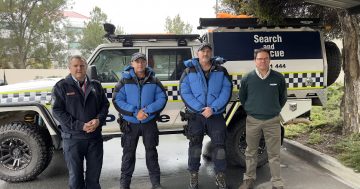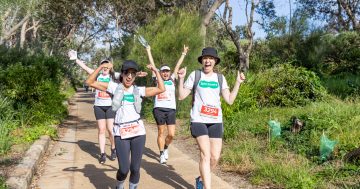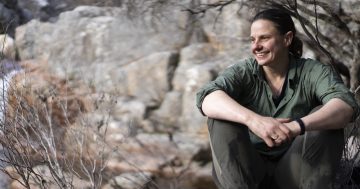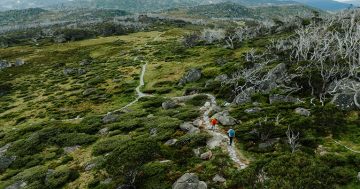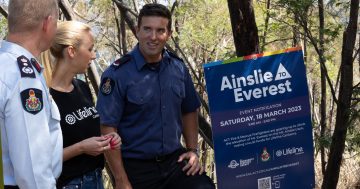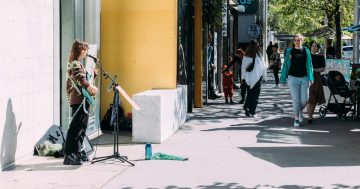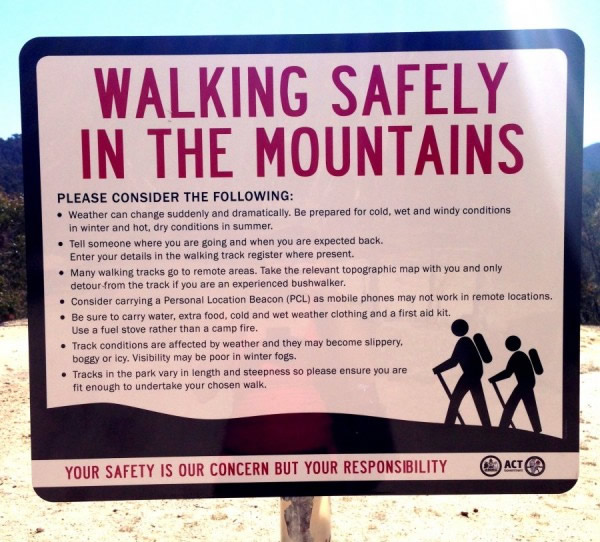
In the land-locked ACT, getting out to enjoy the warmer weather may mean hiking or mountain biking in Canberra bushland.
But in many of these areas, including parts of the Tidbinbilla and Namadgi reserves, there is no mobile phone reception.
If you’re a solo hiker as I am most of the time, there are a few steps you should take before heading out in case the unexpected happens.
It’s all too easy to trip and take a fall and at this time of year and the snakes are coming out. I saw the biggest red belly black snake of my life while out walking near Corin Dam.
To play it safe, tell someone where you’re going and what time you’re expected back when you’re heading out for a hike.
It’s a good idea to also carry a personal locator beacon with you. I have one of these and carry it every time I head out for a hike. They’re light, compact and easy to carry in your backpack. Beacons retail for a few hundred dollars through fishing, boat, aviation, bushwalking and camping stores, but it’s an investment that could save your life.
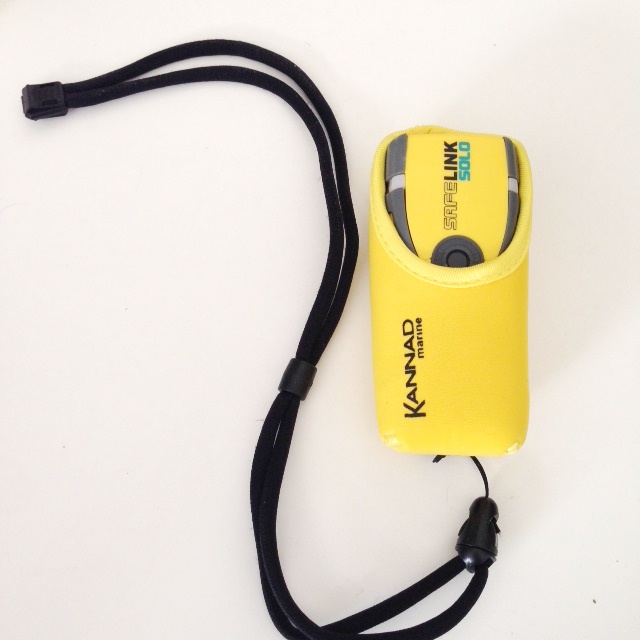
A personal locator beacon will work in areas without mobile reception. When a beacon is activated, satellites transmit the signal through ground stations to the national search and rescue coordination centre in Canberra.
It’s best to buy a GPS beacon if possible. A GPS beacon can provide its location within 20 minutes.
When a signal is detected, search and rescue officers will first check if the beacon is registered. You can register your beacon for free with the Australian Maritime Safety Authority (AMSA). When you register, information you need to include is your contact number and emergency contact/s. Your emergency contact should be the person you would usually tell where you’re going such as a family member, partner or friend. You can also add trip details. It’s important to keep all contact details up to date.
You can register your beacon online via your computer or mobile phone at www.amsa.gov.au/beacons or by phoning 1800 406 406.
If the rescue coordination centre can’t contact you, they will phone your emergency contact. This helps the officers determine your location and task the nearest search and rescue personnel such as police or a rescue helicopter.
Having a registered personal locator beacon is your best chance of being rescued as quickly as possible.
It’s also important to make sure you bring sufficient water and food with you on your hike, as well as some warm clothing. Plenty of water is a must – I can’t think of any hikes I’ve done in the ACT where there’s been a water source in the area so bring a few litres along if you can.
The weather can change quickly in the mountains so it’s best to be prepared in case of cold or rainy conditions.
I always carry more food and water than I probably need – a sandwich and some fruit, biscuits and muesli bars, and I always have a jumper and long pants with me just in case. A first aid kit and a torch are also a good idea.
Check the weather forecast before you go. If rain is predicted, it’s probably best to leave the hike to another day.












